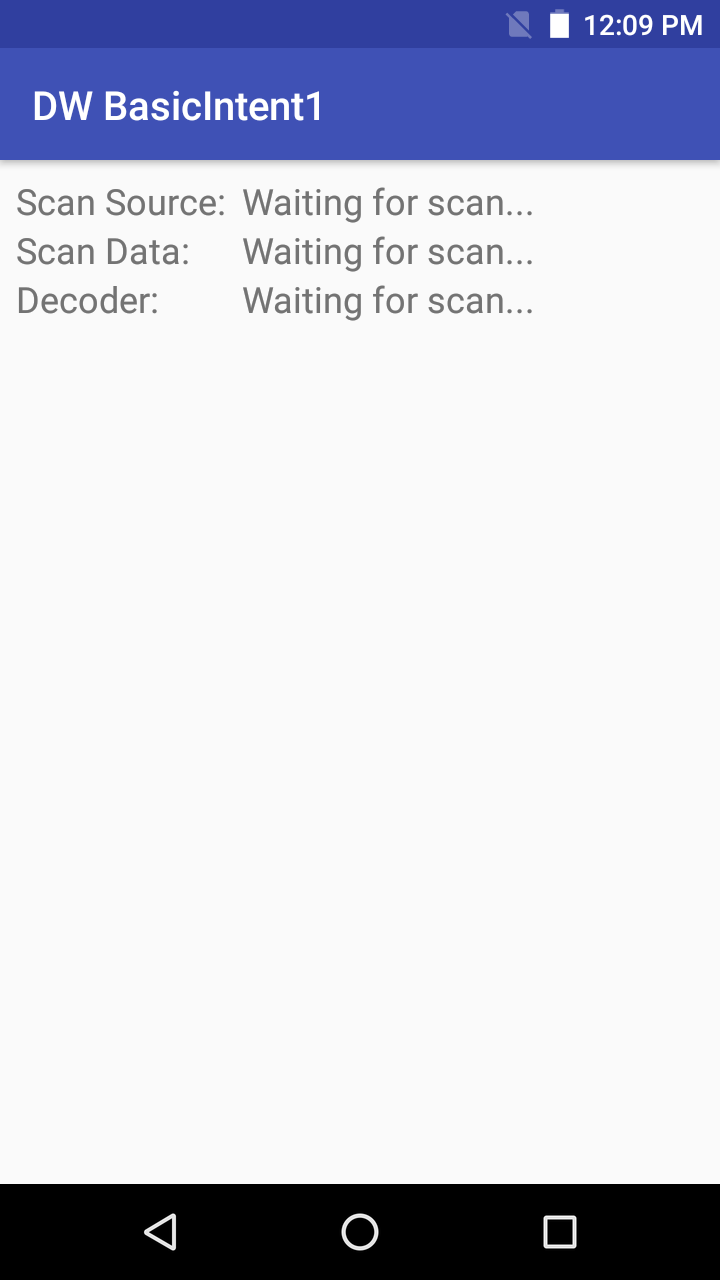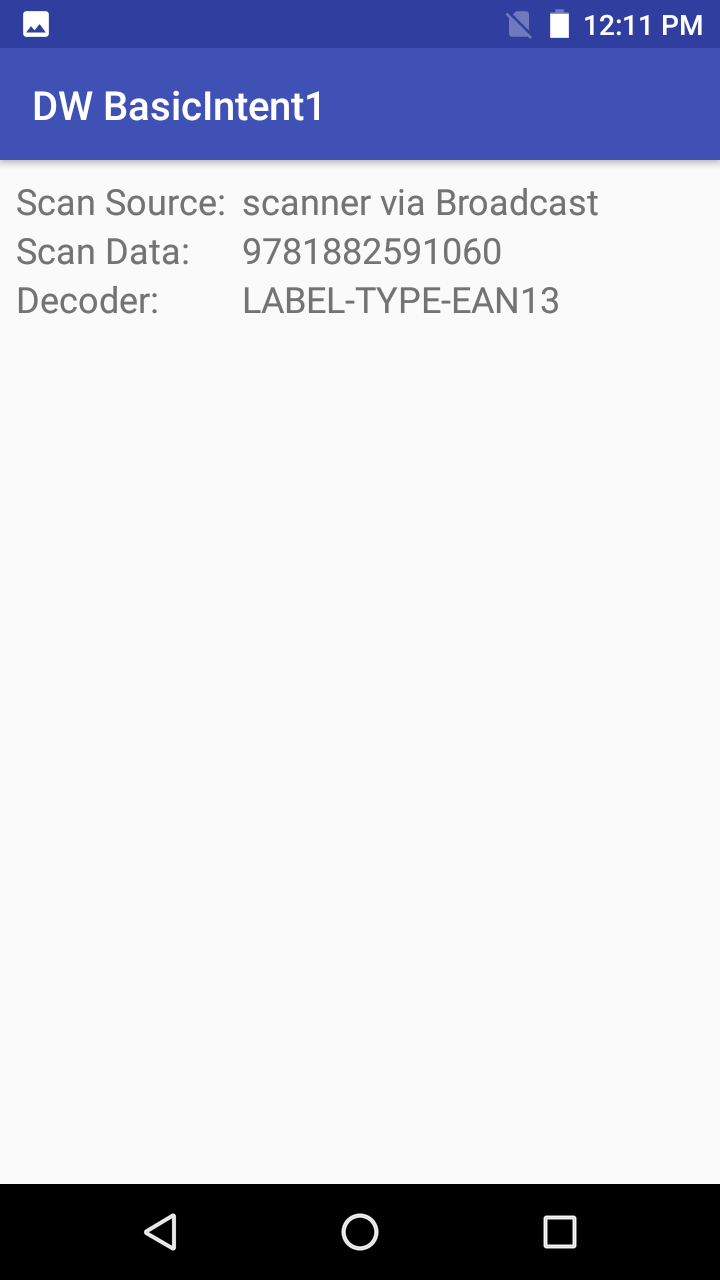

This sample demonstrates how to use DataWedge to receive scanned barcode data through an Android intent. The high level steps are:
This is the minimal code approach using a generic Android intent rather than DataWedge APIs. To develop an app with finer control of DataWedge settings and data capture, refer to the DataWedge API guide and best practices in the Get Started guide.
| DataWedge API | App Functionality |
|---|---|
| None | None |
Configure DataWedge to output scans via intent:
Launch DataWedge via Apps > DataWedge.
Select a profile (e.g. Profile0 which is used for all apps not explicitly assigned a profile), or create a new profile.
Associate the profile with this sample app:
a. Tap Associated Apps.
b. In the top right menu, select New app/activity.
c. Select com.zebra.basicintent1.
d. Select *.

Confirm the following settings:
Configure the intent output as follows:
strings.xml file. This is an implicit intent that is sent by DataWedge. The application must register a broadcast receiver with the given action in order to receive the intent.)
Refer to the DataWedge Intent Output guide for more information about these settings.
To use the app:
Download, build, and launch the BasicIntent1 sample app.

Scan a barcode. The data fields are populated.

Refer to BasicIntent1 sample app source code.
There are several important points to ensure that the app receives the intent data sent from DataWedge:
<resources>
<string name="app_name">DW BasicIntent1</string>
<string name="activity_intent_filter_action">com.dwbasicintent1.ACTION</string>
<string name="datawedge_intent_key_source">com.symbol.datawedge.source</string>
<string name="datawedge_intent_key_label_type">com.symbol.datawedge.label_type</string>
<string name="datawedge_intent_key_data">com.symbol.datawedge.data_string</string>
</resources>
Register a broadcast receiver. Since DataWedge is configured to send a broadcast intent, the application must register a broadcast receiver. This is done in the onCreate() method in the sample app:
protected void onCreate(Bundle savedInstanceState) {
IntentFilter filter = new IntentFilter();
filter.addCategory(Intent.CATEGORY_DEFAULT);
filter.addAction(getResources().getString(R.string.activity_intent_filter_action));
registerReceiver(myBroadcastReceiver, filter);
}
Note that the action being filtered matches the action configured in the DataWedge profile. In a production application, for efficiency the register/unregister would likely be done in the onResume()/onPause() methods.
Define the broadcast receiver. This is done in MainActivity.java in the sample app:
private BroadcastReceiver myBroadcastReceiver = new BroadcastReceiver()
{
@Override
public void onReceive(Context context, Intent intent)
{
String action = intent.getAction();
Bundle b = intent.getExtras();
if (action.equals(getResources().getString(R.string.activity_intent_filter_action)))
{
// Received a barcode scan
try
{
displayScanResult(intent, "via Broadcast");
}
catch (Exception e) {
// Catch if the UI does not exist when we receive the broadcast
}
}
}
};
Extract the scanned data and display it on the screen. This is done in method displayScanResult() in the sample app:
private void displayScanResult(Intent initiatingIntent, String howDataReceived)
{
String decodedSource = initiatingIntent.getStringExtra(getResources().getString(R.string.datawedge_intent_key_source));
String decodedData = initiatingIntent.getStringExtra(getResources().getString(R.string.datawedge_intent_key_data));
String decodedLabelType = initiatingIntent.getStringExtra(getResources().getString(R.string.datawedge_intent_key_label_type));
final TextView lblScanSource = (TextView) findViewById(R.id.lblScanSource);
final TextView lblScanData = (TextView) findViewById(R.id.lblScanData);
final TextView lblScanLabelType = (TextView) findViewById(R.id.lblScanDecoder);
lblScanSource.setText(decodedSource + " " + howDataReceived);
lblScanData.setText(decodedData);
lblScanLabelType.setText(decodedLabelType);
}
Note that the extra keys were defined earlier in the strings.xml file. This code assumes a UI exists in which to place the data, as performed in the sample app.
Related guides:

